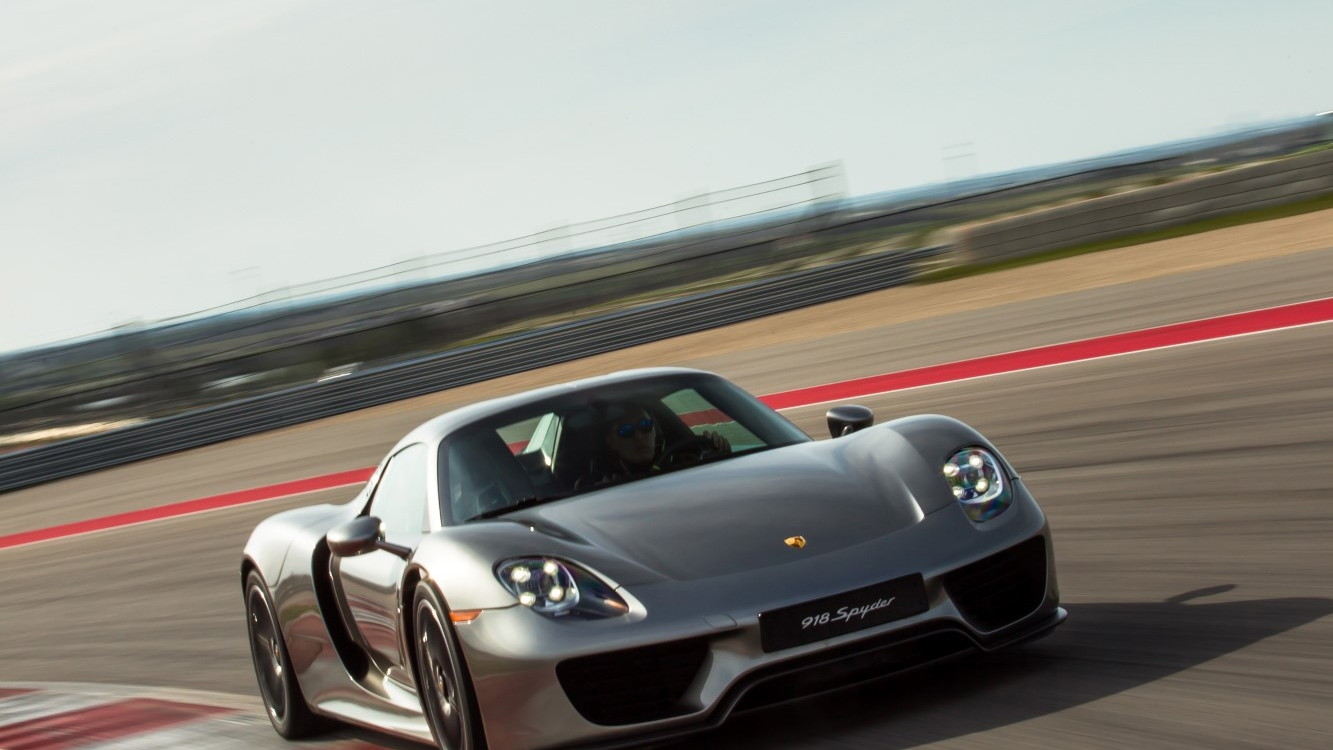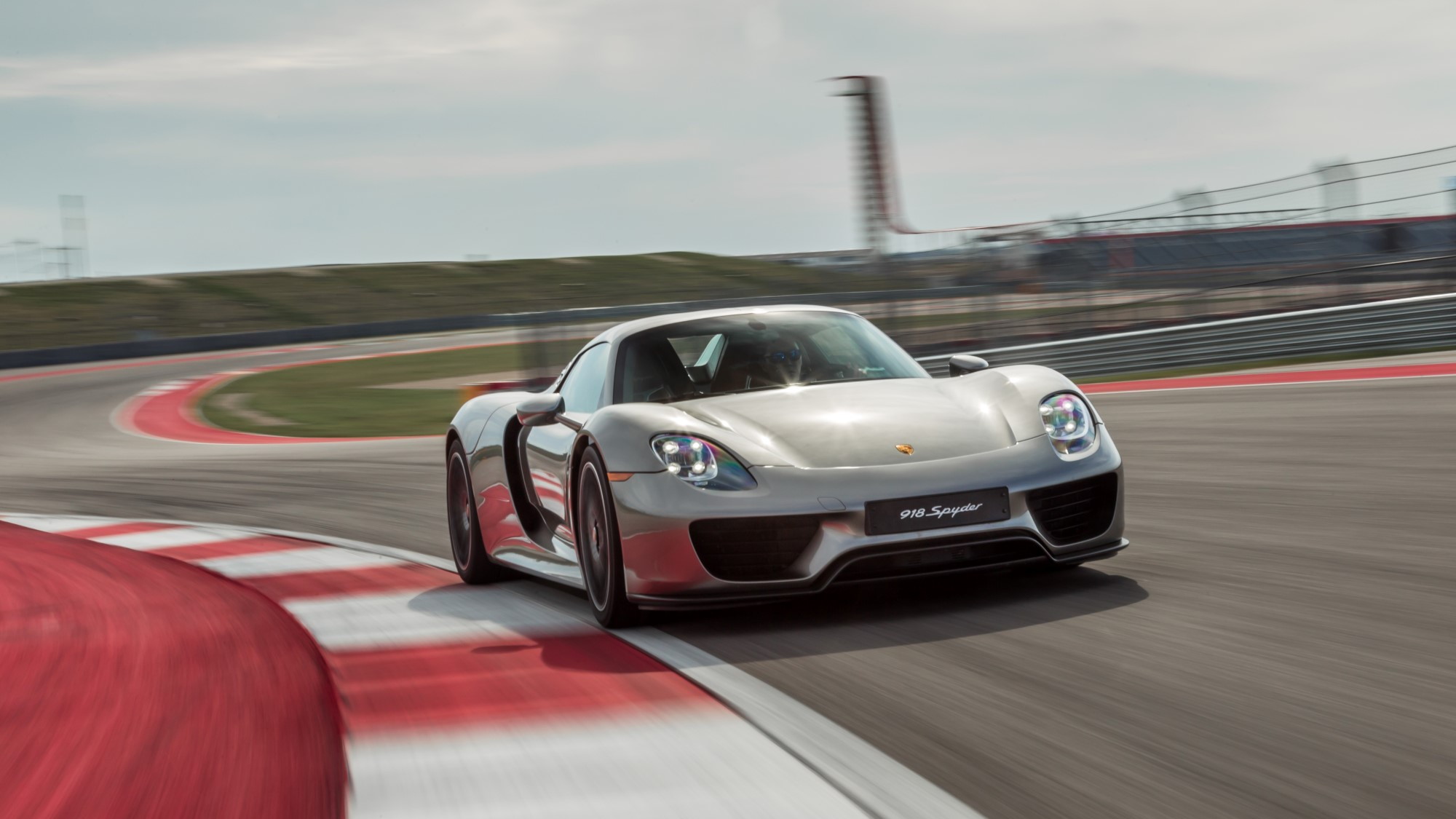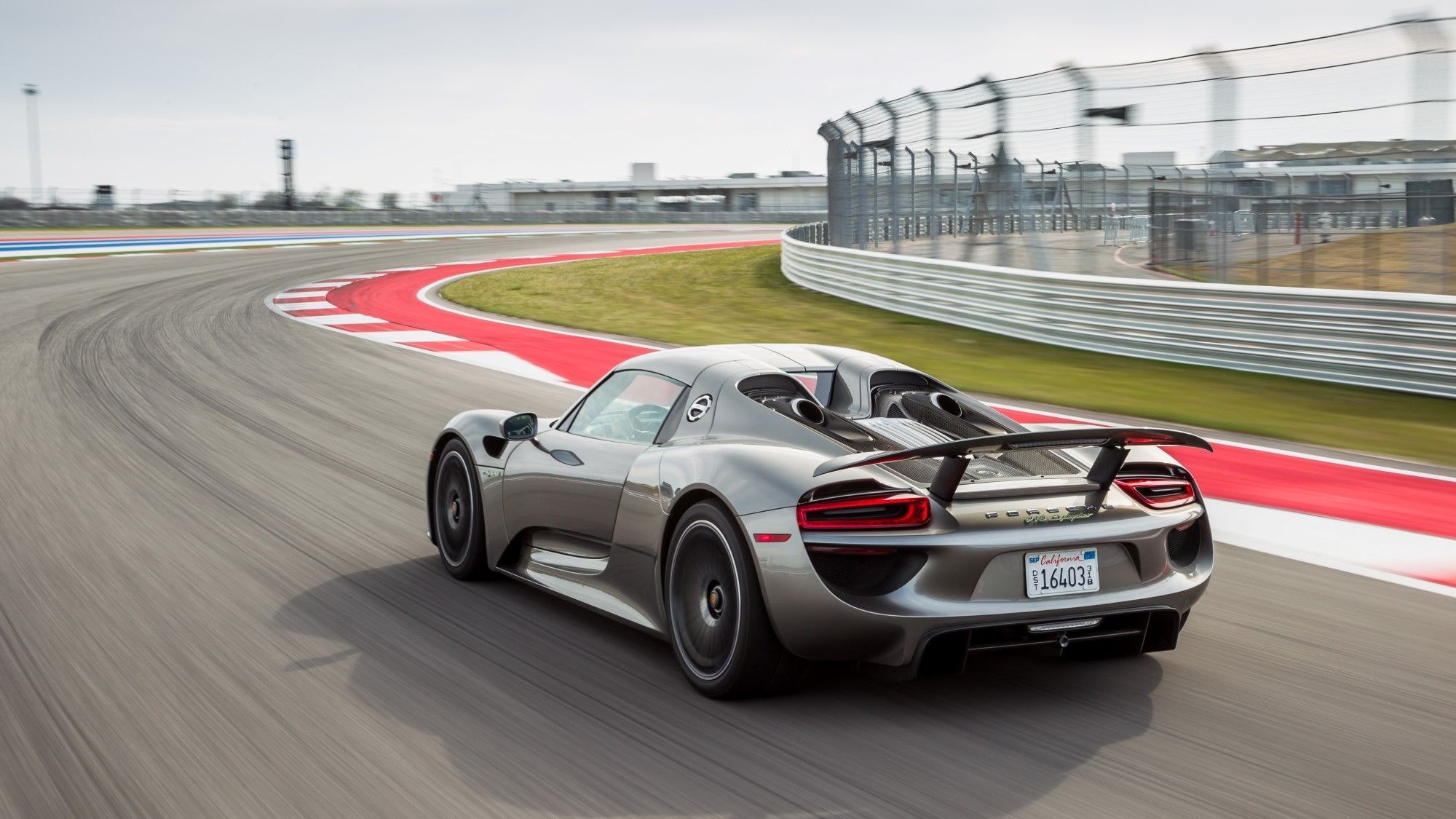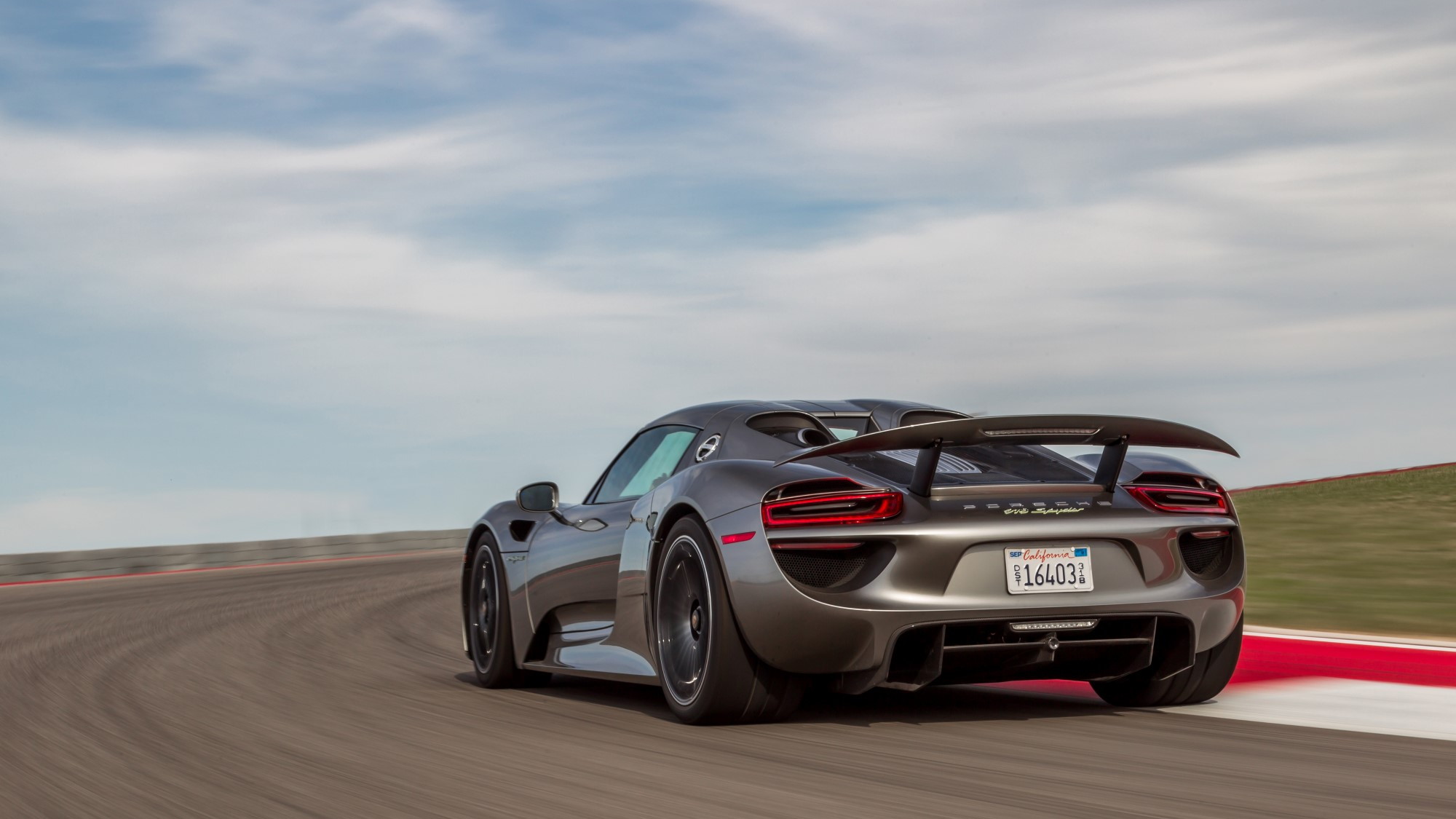In recent years, we've seen it used on SUVs and large luxury sedans too. And more recently still, the latest breed of supercars has driven down the hybrid route.
One such supercar is Porsche's 918 Spyder, driven by Motor Authority.
From the outside, it's instantly recognizable as a Porsche. You get the curving bodywork, the familiar headlight design hinting to the marque's most famous 911 model, and a general impression of restraint you'd not see from something Italian or American.
Under the skin though, it's very different to anything Porsche has produced before.
Previous Porsche hypercars have used different methods to extract their maximum performance. The Carrera GT featured an F1-inspired V-10 engine. The 959 of the 1980s had a twin-turbocharged flat-six.
The 918 Spyder uses a gasoline V-8. But it also uses a pair of electric motors, one at the front and another at the rear, to assist the engine and occasionally, to drive the car alone.
There's even a plug, giving the car's battery enough juice for a 12-19 mile all-electric range. It may be designed for the track, but it works in the city too.
Porsche quotes an official fuel consumption figure of 78 mpg in Europe. It'll never do that, unless it's only ever driven around the city with the big V-8 kicking in every so often.
But the electric and hybrid element means it's a great deal less consumptive than cars of equivalent performance. Or indeed, cars with far, far less performance.
That is the main goal, of course. All-told, this is a 875-horsepower car, with 944 pounds-feet of torque at its peak. The typical 0-60 mph benchmark, used for decades to express a car's accelerative performance, can be covered in just 2.5 seconds, while a top speed of 214 mph is possible.
All that is as impressive as it sounds. On track, Motor Authority describes the ease by which the 918 can keep up with a professionally-driven Porsche 911 Turbo--yet on the road, it's "like owning a Chevy Volt that can fit an 887-horsepower hyper-hybrid in the trunk".
That's the appeal of cars like this, of course.
Realistically, hypercars don't contribute much pollution on a global scale. They sell in small numbers, and most spend their days in the owner's garage, pampered and admired.
But Porsche, as well as rivals McLaren and Ferrari, have shown that hybrid technology can make a car faster and more exciting. That the 918 can cruise around the city using less gas than a Prius is simply a nice bonus.
_________________________________________


















